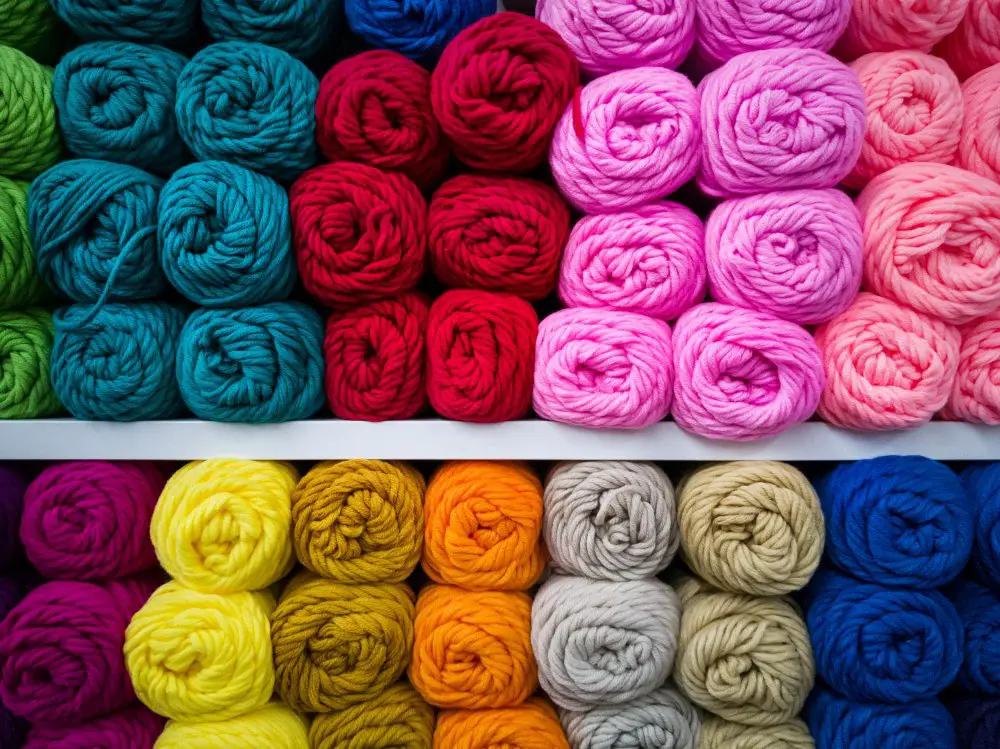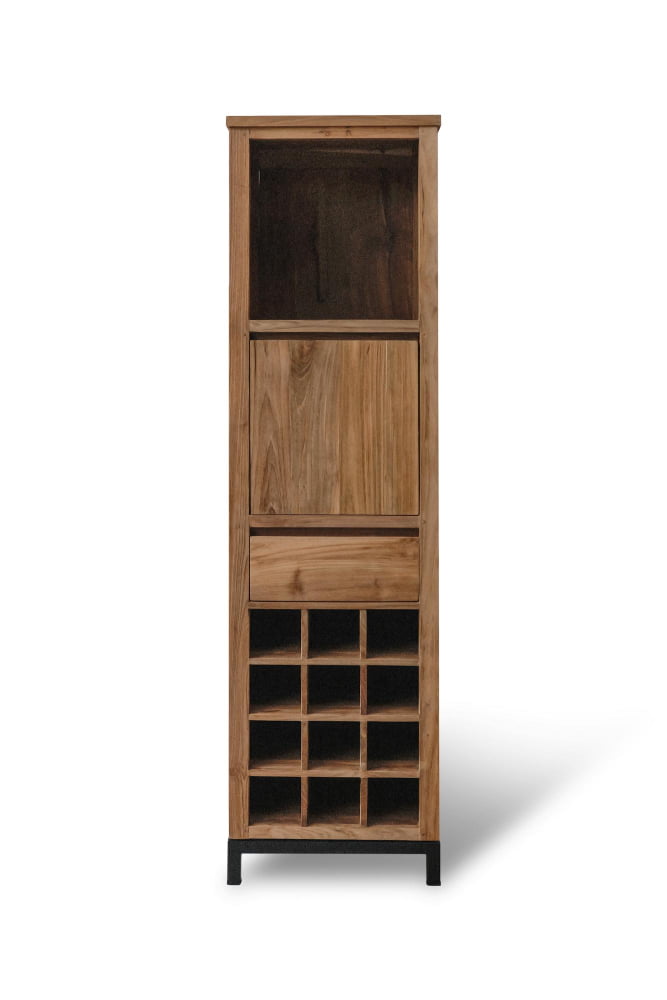Explore efficient strategies for organizing your yarn stash to optimize your crafting space and enhance productivity.
Organizing yarn can seem like a daunting task, especially when your collection has grown over time. However, with a systematic approach, it’s possible to transform your yarn stash into an orderly, easily accessible resource.
This article will guide you through practical steps to sort, categorize, and store your yarn in a way that not only makes it easy to find what you need but also protects the quality of your yarn.
From using storage bins, to color coding, to creating a digital inventory, you’ll discover a range of effective strategies to keep your yarn collection well-organized.
So, let’s unravel the mess and start organizing your yarn.
Key takeaways:
- Separate and categorize yarn by color and shades.
- Use airtight boxes with secure lids for yarn storage.
- Stack wooden crates to create custom shelving for yarn.
- Repurpose a wine cabinet for stylish yarn storage.
- Utilize a pegboard for wall-mounted and visually appealing yarn storage.
Organizing Your Yarn By Color

Start by separating all skeins or balls into groups according to their base color. This includes reds, blues, greens, yellows, etc. Group neutral colors like black, white, and grays together for easy access.
If a skein has more than one color, categorize it based on the most dominant color or the color you are most likely to associate it with.
Next, sort each color group by shades. Arrange from light to dark or vice versa.
For an efficient search in the future, consider separating variegated yarns, self-striping yarns, and yarns with similar colorways but different textures.
Lastly, always reorganize your yarns back into their respective color groups after each project to maintain order.
Storing Yarn in Airtight Boxes

Airtight boxes are a practical choice for yarn storage, protecting the material from dust, sunlight, and dampness, resulting in longer-lasting yarn. Make sure you have selected boxes with secure, sealing lids. For ease of access and visibility, clear plastic boxes are ideal.
While storing your yarn in these boxes, ensure that each skein or ball is gently placed into the box to prevent crinkling or tangling. For added protection, you may want to use acid-free tissue paper to wrap around each ball. There’s no need to overfill; boxes should close comfortably without compressing your yarn.
Consistency matters when categorizing the yarn within the boxes. You could sort by yarn type, color, or thickness; the key is sticking to a system that works for you.
Storage boxes might need to be kept off the ground, especially in damp environments like basements, attics, or garages. A simple shelf or platform can provide the necessary elevation.
Regularly check your boxes for any signs of damage from moisture or pests. Replace the box if it shows signs of age.
Remember to account for growth – always have a few extra boxes at hand for any new yarn purchases.
Airtight box storage ensures durable protection and helps keep your yarn neat and ready for your next project.
Stacking Wooden Crates for Yarn Storage

To make the most out of wooden crates, they shouldn’t simply be stacked one on top of another. Instead, consider creating a custom shelving unit. Here are some key ideas to keep in mind:
- Crates can be stacked horizontally or vertically, allowing for variation in your storage design.
- Different sizes of crates can house different amounts and types of yarn, making the system highly adaptable to your collection.
- Secure each crate to the next using small screws or robust glue, ensuring the stack remains stable.
- Use the open sides of the crates for easy viewing and access to your yarn.
- Consider painting or staining the crates to match the decor of your crafting area, creating a beautiful storage display.
- Remember to position the crates in a way that prevents yarn from getting tangled. Using small plastic bags within each section can help with this.
- Keeping heavier yarns on the bottom of the stack and lighter ones on top for balance is crucial.
Repurposing a Wine Cabinet for Yarn Storage

Transforming a wine cabinet into storage for your yarn offers a stylish and functional solution.
Firstly, empty the cabinet and, if needed, clean with a gentle cleaner to remove any lingering wine odors that may transfer to the yarn.
Next, use the individual compartments, which were initially designed to hold wine bottles, to isolate different types of yarn.
This can be done based on color, weight, or texture.
The nature of these compartments allows easy access to your skeins, preventing them from getting tangled.
Thirdly, cabinets often have additional shelves, which provide extra space for your hooks, needles, and other crochet or knitting equipment.
Lastly, consider adding labels to each compartment for better organization.
This option not only helps maintain an organized yarn collection, but it also adds a visually pleasing element to your crafting space.
Using a Pegboard for Wall-mounted Yarn Storage

Pegboards offer a unique and practical storage solution. They’re particularly useful for smaller spaces, as they utilize vertical space that might otherwise go unused.
To set up a pegboard system:
- Choose a pegboard of appropriate size for your wall and yarn collection. They come in various sizes and styles.
- Install the pegboard on your wall. It can be helpful to enlist a friend for this step, as the board may be somewhat unwieldy.
- Purchase peg hooks. The type and amount you need will depend on the weight and quantity of your yarn.
- Arrange yarn by color, weight, or type on the hooks. You’re essentially creating a work of art that is as beautiful as it is functional.
- Use baskets or bins hung from hooks for smaller skeins or scraps that may slip off hooks.
Benefit of this system is clear at a glance, every spool is visible and easily accessible. Moreover, a wall filled with colorful yarns can serve as an inspiring decor feature in your crafting zone.
Keeping Yarn Safe From Insects

Several insects, like moths and beetles, can cause damage to your yarn collection, especially if it consists of natural fibers like wool. To keep these tiny critters away, you may follow these steps:
- Store yarn in sealed containers: Plastic or glass with tightly sealed lids provides an ideal barrier against pests.
- Use insect deterrents: Cedar blocks, sachets of lavender or insect-repelling mothballs can help. Always place deterrents outside the yarn storage containers to prevent direct contact.
- Freezing yarn: If you’ve bought second-hand yarn or suspect an infestation, place the yarn in a sealed plastic bag and freeze for at least 48 hours. This effectively kills any larvae.
- Regularly clean storage area: Ensure you vacuum and dust your yarn storage area often, to discourage any insects from settling in.
Remember, humidity and warmth attract insects, so aim for a dry, cool storage area. Taking these easy measures will ensure the longevity and quality of your yarn and safeguard your future craft projects.
Selecting a Dry, Dark Place for Yarn Storage

Natural and delicate fibers, like wool and silk, may fade or subtly change shades when exposed to sunlight over prolonged periods. Hence, your chosen storage should ideally be away from direct or bright light. Dampness can also prove disastrous for these yarn fibers by encouraging mold growth or fiber degradation. Therefore, steer away from storing yarn in basements, garages, or other damp locations unless they are securely sealed in airtight containers.
Identify a suitable space that is both dark and dry, potentially a cabinet, shelf, or wardrobe in your living area or bedroom. It is pivotal to ensure that the storage location is exempt from abrupt weather changes, like temperature or humidity fluctuations.
Additionally, your yarn storage should be out of the reach of pets, as cats and dogs might consider these colorful skeins their playthings, leading to damage or disarray. Finally, remember this yarn storage tip: place your most fragile and expensive yarns further back in your storage setup or higher up out of the way. This will help them last longer and remain in mint condition until you are ready to use them.
Cataloguing Your Yarn Collection

To effectively catalogue your yarn collection, consider labelling each yarn skein or ball with pertinent details. Include the brand name, colorway, dye lot, and fiber content. If you wish to invest a bit more time, add types and sizes of hooks or needles suitable for that specific yarn.
Developing your personal yarn cataloguing system akin to a library may also serve useful. Categories might be set up by weight (fingering, worsted, bulky), fiber type (acrylic, cotton, wool), or color. Stick to a system that aligns with your preferred method of sorting and finding yarn.
Implement a digital cataloguing system if visual organization isn’t enough. Free online tools and apps like Ravelry, Trello, or even a simple Excel spreadsheet can be efficient ways to track what yarn you have.
Also, remember to update the cataloguing system regularly. Whenever a new skein arrives or when you’ve finished a yarn ball, update your system to keep things current.
Take photographs of your yarn. Having a photo archive of your yarn can be an easy and quick way to survey your collection without needing to unpack and repack your entire stash. It can also help when you are out shopping for yarn, ensuring you don’t buy duplicates or miss coordinating colors.
Remember, the main objective of cataloguing is to keep your yarn stash manageable and to ease your next yarn selection process for a project.
Budget-friendly Solutions for Yarn Organization

Utilizing everyday objects such as shoeboxes, baskets, or bags can save money while simultaneously organizing your yarn. Keep your yarn visible, accessible, and tangle-free without unnecessary cost. Grocery bags offer great portability and clear shoeboxes provide low-cost visibility. Baskets can serve as both stylish decor and a spacious home for your yarn.
Instead of purchasing new furniture, consider repurposing you already owe. An old bookshelf can be quickly transformed into a yarn storage simply by removing unnecessary components. Similarly, empty jars can be filled with smaller balls of yarn, doubling as colorful decorations.
Spaces often overlooked can turn into great yarn storage areas. Hanging fabric shoe organizers behind doors or inside closets not only saves precious floor space but also offers numerous compartments for separation.
Reclaimed wood or wooden pallets can be used to create rustic and unique yarn shelving. If DIY isn’t for you, yard sales and thrift stores often sell shelves and crates at bargain prices, providing an affordable solution ready for use.
Applying these cost-efficient strategies, you can successfully arrange your yarn stash while staying on a budget.
FAQ
What is the best way to store yarn stash?
The most effective approach to yarn storage involves using labeled woven bins or a storage tower, strategically placed away from direct sunlight to maintain color vibrancy and fiber strength.
How do you make a yarn stash?
Creating a yarn stash involves categorizing and storing your yarn in resealable bags or containers based on specific attributes such as weight or color, and keeping yarn intended for specific projects together.
What are some creative ideas for displaying a yarn collection?
Creative ideas for displaying a yarn collection may include arranging by color on open shelving, using vintage wooden crates or jars for a rustic appeal, displaying yarn balls in clear glass vases, or hanging them on a wall-mounted pegboard for an easily accessible and decorative display.
How can you prevent yarn from tangling when stored?
To prevent yarn from tangling when stored, keep each skein or hank in a separate zip-lock bag, pressing out the excess air before sealing.
Which factors should be considered when choosing a location for yarn storage?
When choosing a location for yarn storage, consider factors such as temperature, humidity, light exposure, and potential issues with pests or pet interference.





